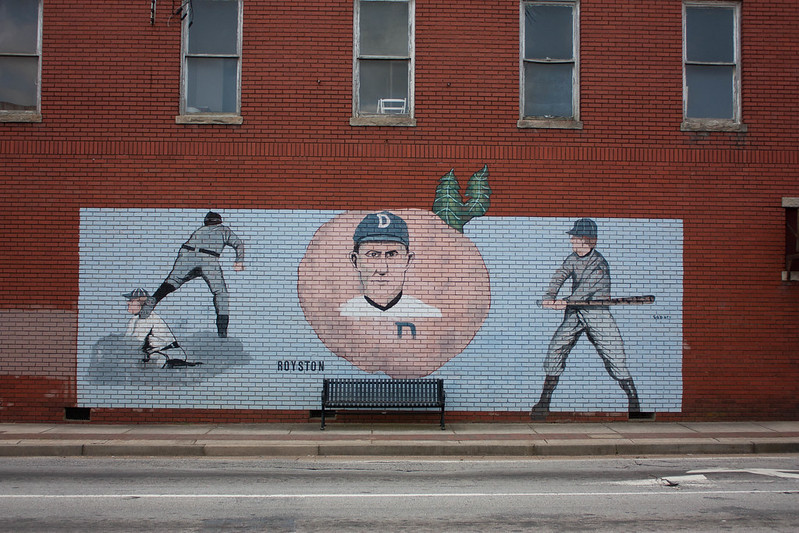Hall of Fame baseball player Ty Cobb had an interesting financial life. As one of the best players of his time, Cobb was one of the highest paid. But I want to focus on his financial life as a whole including his investments and even his philanthropy.
First of all, let’s take a look at his salary. During his time he was one of the highest paid players in the league. In fact, for several years (1910, 1911, 1914,1916-1920, and 1921) he was the highest paid player in baseball earning as high as $25,000 in 1921. This was all just before Babe Ruth took the baseball world by storm and became the highest paid player for over a decade. [1] This show you not only Cobb’s ability on the field, but also shows his negotiation skills when it came contract time. He would also go on to show his managerial skills as a manger of the Detroit Tigers.
This was huge money for the time. When looking at the annual average salary of teachers in Michigan of just $557.71 for 1914-1915, you start to see just how much more Cobb was paid during his time in the league as he was paid $15,000 in 1914. Even compared to white carpenters, who were paid at a higher level than many other semi-skilled occupations, made just $0.5216 per hour on average. Working an average of 50 hours a week, that is just $26.29 a week in pay.[2]
Cobb was a rarity in baseball during his time in that he invested a lot of his money. One of his major purchases was Coca-Cola stock. He was convinced by then president of Coca-Cola Robert W. Woodruff, to invest in the company. This would go on to make Cobb a very wealthy man. Despite denying reports that he cleaned up with profits of over $200,000 in 1928, investing made Cobb one of the first athletes to become independently wealthy in a time when most athletes worked in the off-season. [3] He was known for his investments over the years which included several big companies. He was an investor in United Motors, which General Motors eventually acquired. [4]
An example of his investing was in 1912 Cobb invested in a local Detroit sporting goods company called the W.B. Jarvis Company. With that investment he was elected to director of the company right away, and worked during the winters to build up the baseball department. [5]
Cobb was a very business conscious man even while playing baseball. As early as 1912 Cobb stated, “I have intended for some time to make Detroit my home and have been on the lookout for a business opening.” [6] Years later after retirement from managing in 1926, Cobb entered the business world full-time. Even then he was considered by many as the wealthiest baseball player of the time. [7]
Cobb was known for his hard style of playing; some may have even thought of his as dirty during his time. But what many do not know, or just do not want to focus on, was his philanthropic endeavors. In 1950 the Cobb Memorial Hospital opened up in Royston, GA. The twenty-three-bed hospital was made possible by a $100,000 donation from Ty to his hometown. The hospital was a memorial to his parents, Prof. and Mrs. Herschel Cobb. [8] Since its inception, the hospital has grown into the Ty Cobb Healthcare system.

The Ty Cobb Educational Foundation was formed by Cobb to assist residents of Georgia, his home state, in need of financial assistance to complete their college education. Due to Cobb’s financial savvy, he was able to start the foundation which to date has given out over $19 million in scholarships. Cobb served on the board for the foundation from 1953-1954. [9]
Cobb was big on education. His father was a principal and wanted Ty to attend college. Unfortunately, Cobb’s father never saw him play as he was accidentally shot by his mother just before Cobb was called up to the Detroit Tigers. Thus the foundation for education meant a lot to Cobb as he wanted his children to have the best education possible. His son Ty Jr. would go on to attend Princeton and Yale. [10]
And when you look at the business that Cobb was in most of his life, baseball, you have to understand that the league did act in monopolistic ways, yet they were not subject to antitrust laws thanks to the Supreme Court decision in Federal Baseball Club of Baltimore v. National League in 1922. Despite the court admitting that the league did participate in interstate commerce and should be subject to the laws, it ruled in baseball’s favor. A ruling that has not been overturned despite repeated efforts. Baseball remains the only sport in America that enjoys such protections.
[1] Michael Haupert, “MLB’s Annual Salary Leaders Since 1874,” Society for American Baseball Research, https://sabr.org/research/article/mlbs-annual-salary-leaders-since-1874/.
[2] Haynes, George E. Ph.D., The Negro at Work During the World War and During Reconstruction (Washington DC: Government Printing Office, 1921), 45.
[3] “Cobb Not Quitting Baseball,” New York Times, March 31, 1928, 15.
[4] Mary C. Moran, “Ty Cobb: An Unlikely Philanthropist,” Wealth Management, accessed November 16, 2022, https://www.wealthmanagement.com/philanthropy/ty-cobb-unlikely-philanthropist.
[5] “Ty Cobb is a Merchant: Tigers Outfielder Buys Shares in Detroit Sporting Goods House,” New York Times, June 09, 1912, 1.
[6] Ibid., 1.
[7] “Ty Cobb Steps Down as Detroit Manager,” New York Times, November 04, 1926, 30.
[8] “Ty Cobb to Be Honored,” New York Times, January 22, 1950, 145.
[9] “Home,” Ty Cobb Educational Foundation, accessed November 16, 2022, https://tycobbfoundation.com/.
[10] Moran, “Ty Cobb”.

